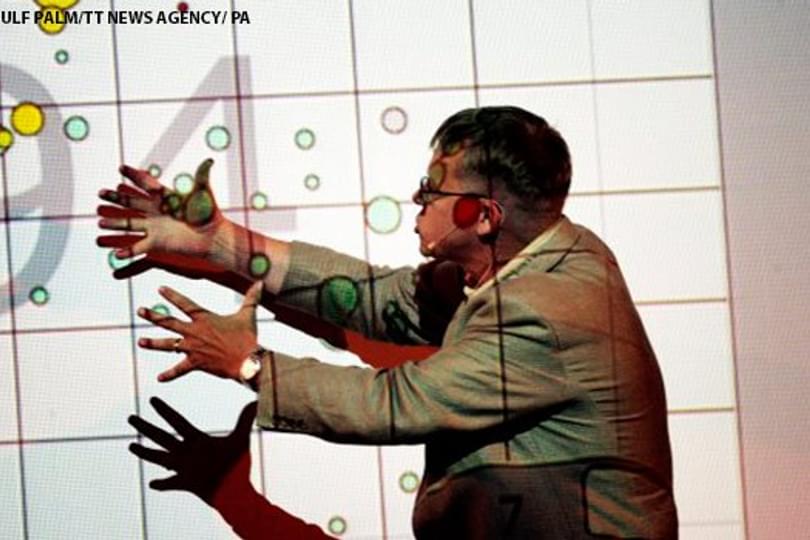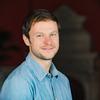
Max Roser, project director of Our World in Data, based at the Oxford Martin School, reflects on the life and work of influential statistician Hans Rosling.
Hans Rosling died last Tuesday (7 February 2017) at the age of 68, as the Gapminder Foundation - which he co-founded - announced. My deepest condolences to his family, friends, and the many of us who will miss his contributions to the public discourse.
A medical doctor and professor for international health at Stockholm’s Karolinska Institute, Rosling became famous as the public educator who used statistics to show how the world is changing.
He chose this public role after making two significant discoveries.
Rosling’s first discovery was that many people are not aware of even the most basic facts about global health and global development. Through surveys he conducted, Rosling found that at a time when poverty is falling faster than ever before, the majority of people think that the proportion of the world population living in extreme poverty is rising. Similarly, he found that many underestimate global life expectancy widely, and are not aware of the success of delivering healthcare services—for example, vaccines—globally. He found that people’s worldviews often do not have much grounding in facts, even long before the “post-fact” era.
Rosling was convinced that this unawareness of global progress matters. He made it his mission to fight this “devastating ignorance” that turns us into cynics, as we falsely believe that global development must be a mirage.
Rosling’s second discovery was that this lack of factual knowledge was not because people are not interested in global development, but because it is too hard for those that want to know about global development to access this knowledge. Neither the experts nor the media were presenting how global development changes the world.
Based on these two insights, Hans Rosling made it his mission to bridge this gap and present the evidence that global development is a reality. His approach to communicating research on global development was through public talks and the use of data visualisation.
His breakthrough was a talk at the “Technology, Entertainment, Design” (TED) conference in 2006 that presented the statistical evidence on improving global health. This talk alone was watched by more than 11 million people. More people than the population of his native Sweden decided to watch a talk on health statistics. His later talks— including nine more TED talks and two presentations for the BBC—were watched and enthusiastically shared by millions around the world.
People need to know about global health—everyone working in global health always agreed on that. But people also want to know about global health, and this is what Hans Rosling discovered.
To present global health statistics in short talks to a large audience is not an easy feat. Just how difficult it is to captivatingly talk about numbers can be seen by how few people do it. Rosling knew that it was difficult, and behind his rambunctious and energetic presentations lay months of careful preparation in which he planned every single line for his delivery on stage.
Despite telling the audience that their worldview was wrong and that they were ignorant of some of the most fundamental facts about their world, Rosling was loved and admired by these same audiences. Rosling changed mindsets with humour and humility, and thereby allowed his audience to accept that they were wrong.
The statistical evidence Rosling presented on stage was prepared together with his daughter in law, Anna Rosling Rönnlund, and his son, Ola Rosling. The three of them co-founded Gapminder Foundation, which, before even the big international organisations, saw the potential of the internet to make statistical evidence available to many. In fact, the organisation was instrumental in convincing the big institutions to make their empirical data openly available online.
The team of three produced visualisations that were eye opening in a literal sense. Their visualisations were not uncomplicated—the signature “bubble chart” that Rosling often used conveys information on five different aspects: income and life expectancy on the two axes, population on the size of the bubble, geographic region on the colour, and the change over time in the movement of bubbles across the plot. Despite the visualisations’ complexity, Rosling’s engaging commentary tied together all the information in a way that allowed his audience to see centuries of global health and prosperity change in front of their eyes.
Rosling redefined the role that visualisations of data have in presentations. The visualisation of statistical evidence was always front and centre, but Rosling did not use numbers to illustrate the story he wanted to tell. He told the story that the numbers compelled him to tell.
Rosling showed his fellow academics that their work is relevant and interesting for a large audience. He argued that for science and research to be useful—especially the social sciences—researchers need to make a much larger effort to bridge the gap between academia and public discourse. The lack of popular knowledge about research is not the fault of the public, it is the fault of the researchers.
He showed those working with statistical information how to talk and how to visualise empirical data by turning data visualisation from a tool used in expert circles to a tool to communicate with everyone.
He showed the world that we are making progress despite what our cognitive biases might suggest and despite what the media likes to focus on. His aim was to change mindsets by datasets and he succeeded. Rosling encouraged a generation to be interested and engaged in thinking and working in global development.
In portraits of Rosling, he was too often presented as an “optimist” that tells the world that things will turn out well. This is wrong. What Rosling did was to present the empirical evidence up to the present, and he showed that many vastly underestimate the progress that the world has made in improving living conditions globally. The majority of the world is better off now than at any point in history before. This was his positive message. But he never suggested that this should give anyone any reason to be complacent. He always used his fame to draw attention to the living conditions of the worst off and to denounce the lack of support they were receiving from the large group of people in the world that is living in unprecedented comfort.
Hans Rosling’s message was never that all is good; the enthusiasm for his work came from the fact that he was always convinced that a better world is possible if we care to work towards it.
His presentations on stage and his visualisations of empirical data were the tools he used. But they were not at the heart of what made Hans Rosling successful. Rosling was successful because he knew what statistical figures really mean. He could look at the numbers in a spreadsheet and tell the stories of the human lives behind them. And, key to his success, he was able to share this with his audience. Rosling was able to look at these numbers, read the stories, and explain and share his joy and excitement about what they tell us about our world.
Hans Rosling was part of a closely knit team, and I send my condolences to Anna Rosling Rönnlund, Ola Rosling, and their team at Gapminder, while hoping that they continue the work they started together.
- This article was originally published on BMJ Opinion
This opinion piece reflects the views of the author, and does not necessarily reflect the position of the Oxford Martin School or the University of Oxford. Any errors or omissions are those of the author.
